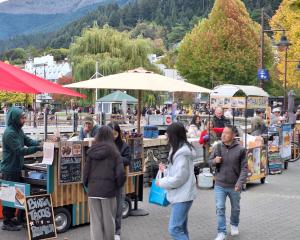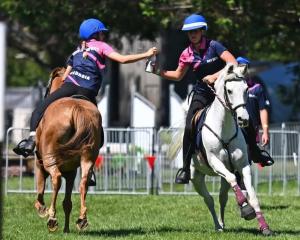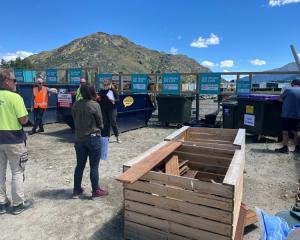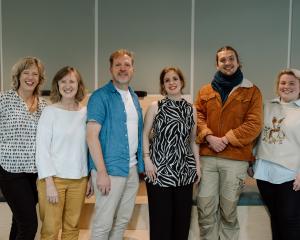
The mid-40s Arrowtowner is one of New Zealand’s leading female architects — funnily, another one, Anna-Marie Chin, is also Arrowtown-based — and, among other roles, is also on the Wakatipu High board of trustees, acting chair of the Arrowtown Planning Advisory Group and a mother of three.
You could also argue she’s married to the job — her husband’s also a registered architect and they co-own the serial award-winning firm, Assembly Architects.
Growing up in Upper Hutt, near Wellington, Louise, born to a Maori mum and Pakeha dad, betrayed early glimpses of her future career by playing with Lego sets.
"Mainly I had the fire station set, but otherwise we just had blank Lego so I would make that into things."
By about fifth form at Heretaunga College, where she ended up head girl, she’d decided to become an architect.
"I also had a cousin a few years ahead of me who had gone into architecture."
Her other interest was hockey, in which she played for under-18 New Zealand and Wellington sides.
At architecture school at Victoria Uni, she won a scholarship to study in Rome in her third year.
Also studying was husband-to-be Justin, who’d earlier gone on the same exchange programme.
After qualifying in 2001, Louise became the right-hand person for distinguished NZ architect, the late Ian Athfield, helping him with several civic projects including libraries.
Four years on, Justin started Assembly by designing a massive house in Wellington, and Louise came onboard.
Between house designs and projects like Wellington Zoo, their first child was born in 2007, followed by twins in 2009.
"Post-GFC in Wellington was really difficult," Louise says, so they shifted to the King Country, designing prefabricated buildings for a marae project there.
The couple also had projects in Queenstown and Wanaka, and were also keen on chasing snow, so they moved south in 2012.
They’d initially thought of Wanaka, but their Arrowtown friend, the late Tim Hemingway, for whom Justin had designed the Arrow Hotel, persuaded them otherwise.
"We moved at a really good time because we met lots of other parents who had kids the same age," says Louise — she and other mums jokingly called themselves ‘MOAs’ or ‘mums of Arrowtown’.
"This region also had significantly more investment in architecture [than Wellington]."
She and Justin — who nowadays employ six staff in their Arrow Lane office — have specialised in high-end Whakatipu and Wanaka homes noted for their thermal efficiency.
One specialty is rammed earth construction, which is what it sounds like.
Among their award-winners are Arthurs Point’s striking Sawtooth House and Queenstown’s novel Binoculars home.
This year they’ve won Southern Architecture Awards for Arrowtown’s much-admired Roost office building and their own ‘outhouse’ — a second structure on their Butel Park home property inspired by Roman courtyard houses. (The latter’s also been shortlisted for a national award.)
As for their style, "I would say every project is different, but we do focus on, I guess, designing the house from inside out, so focusing on its views, its sun, its shelter, getting all those environmental things first".
Louise tends to handle compliance issues and interior detail and design, while Justin’s more into the construction and structural side, she says.
In a magazine article, she says they find subdivision covenants result in a ‘Queenstown look’ that’s not exciting, so they challenged, for example, the Jack’s Point rules by, eventually, getting a low mono-pitched roof approved.
As a sign of the respect she’s held in, Louise has been jury convener for the NZ architecture awards, and she’s also won a women in architecture leadership award.
While ex-museum director David Clarke’s away, she’s also acting chair of the Arrowtown planning group who sign off houses in the historic area.
"We do have a role in protecting what’s there.
"There are a lot of pressures coming on to it through developers and money — if someone’s spending that much, they kind of want to do whatever they want, so it can make for some difficult conversations."
As for working with her hubby, which doesn’t suit all couples, "architecture is one of those pretty consuming things, and when you go home at the end of the day you don’t necessarily switch off, so it actually works well to be together".












